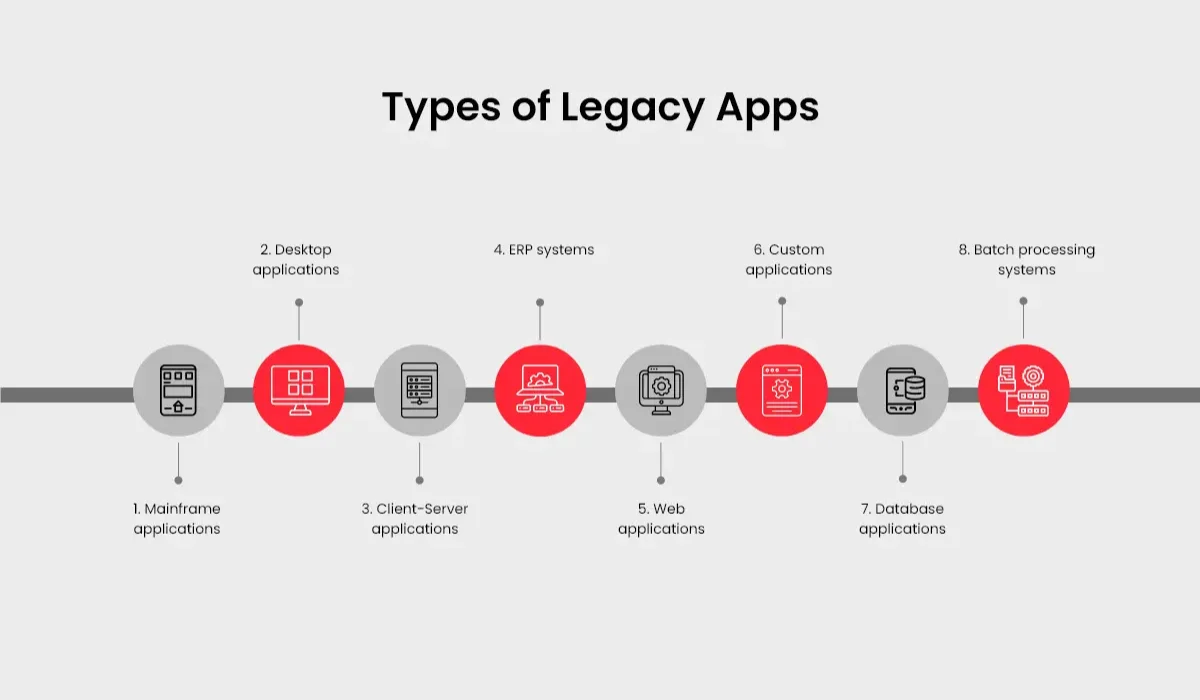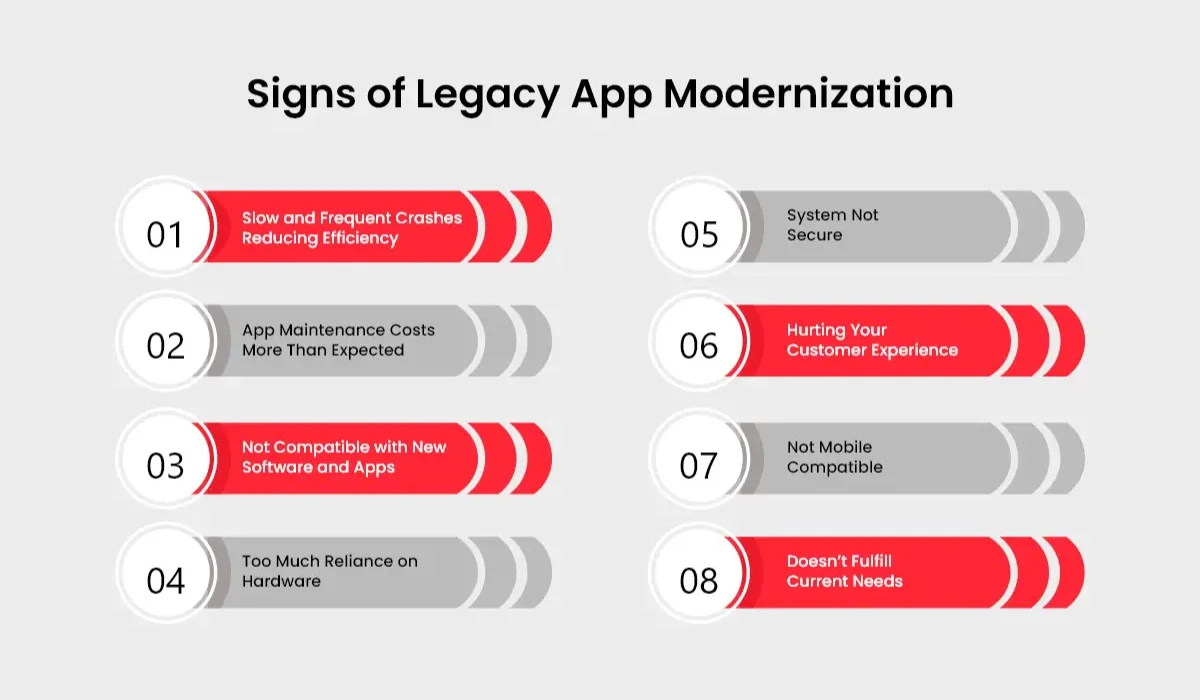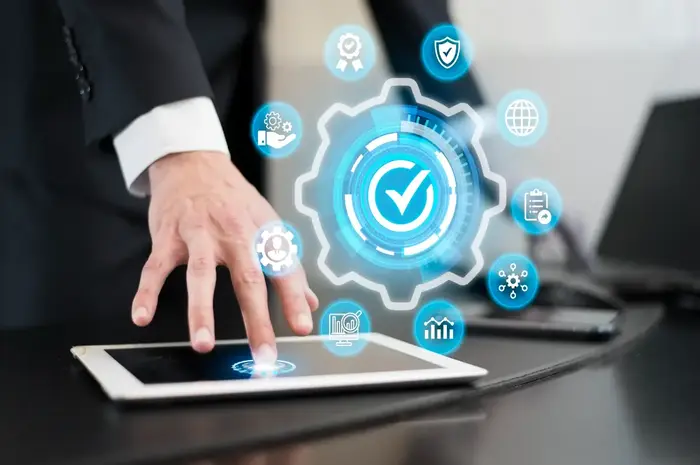Applications that are once the lifeblood of your business may put you at risk. With time, these apps get outdated, bulky, and become a burden. So, should I replace all? No, because it’s costly. Plus, replacement can have serious consequences. A little upgrade can fix everything. But how do you know if it’s time for legacy app modernization? Here are a few hints you should not ignore. Before we disclose those hints, you must know a few most important things.
What is a Legacy Application?
In Gartner’s words, these are business-critical software on which your daily operation depends. But they run on old technologies. A CRM app or an ERP system is the perfect example of a legacy system.
Identifying The Different Forms of Legacy Apps
If you can’t identify it, how would you fix it? There are different types of legacy apps such as:

1. Mainframe Applications: They handle massive amounts of data and perform tasks like enterprise resource planning and financial transaction processing. Though reliable and secure, they are expensive to maintain. They depend on specialized hardware and programming languages.
2. Desktop Applications: These are standalone applications installed on individual desktop computers. And use operating system-specific technologies (e.g., .NET for Windows.)
3. Client-Server Applications: These applications split the workload between a user interface (client) and a server that stores data and handles logic. Common for tasks like data entry and internal tools, they often use older technologies like VB6 or early Java. Such apps need significant resources for operation.
4. ERP Systems: They manage everything from accounting, and procurement to project management. They’re integrated with various processes and systems. However, ERP systems are expensive to customize or update.
5. Web Applications: Early web-based applications designed for the internet or intranet. They are built with HTML, JavaScript, and backend languages like PHP.
6. Custom-Built Applications: These legacy apps are developed in-house or by third parties to meet specific business requirements.
7. Database Applications: They manage and query large datasets, often using outdated database management systems (DBMS) like early versions of Oracle or SQL Server. They may not be optimized for current data handling needs. Usually, they are hard to integrate with modern analytics and reporting tools.
8. Batch Processing Systems: Such legacy systems process data in large volumes at scheduled times rather than in real time. They are common in financial services, payroll, and logistics.
Each type of legacy application presents unique challenges and opportunities for modernization. All you need is to look for some specific signs to know whether to update or replace them.
8 Signs Indicating the Need for Legacy Application Modernization

Sign 1. Slow and Frequent Crashes Reducing Efficiency
Does your app take more than expected to open? Does it crash every time you share a bulky file? Optimizing the app can fix these problems.
But if it’s hurting your business’ efficiency and employees’ productivity, it’s time for app modernization.
Sign 2. App Maintenance Costs More Than Expected
Is the maintenance bill costing you a fortune? Maintaining legacy systems can cost millions of dollars as they don’t have a centralized module for data processing.
Technical debt, licensing fees, regular maintenance costs, and frequent crashes increase this cost further.
Instead of juggling between the expense and maintenance needs, modernize your legacy app. It would be less costly than maintaining the old ones.
Sign 3. Not Compatible with New Software and Apps
All the software and applications in your organization must work well with each other. And if they are not, you need to consider modernizing the old software. This incompatibility is bad for your business, its growth, and also for your customers.
Sign 4. Too Much Reliance on Hardware
Legacy systems are hardware-dependent which increases maintenance costs. More than money, this hardware dependency costs you the poor performance of the applications. Therefore, you must shift those legacy apps to the cloud environment.
Sign 5. System Not Secure
As cyberattacks are upgrading so as the security standards. Running a business with old and outdated software means inviting hackers.
These systems may not be secure in a way to tackle current and advanced security threats. Application modernization is a more secure way to prevent your business from those attacks.
Also Read: Must-Follow 8 Best Practices for Outsourcing Cybersecurity Services
Sign 6. Hurting Your Customer Experience
Customers expect fast and efficient interactions, which old apps might not deliver. They are slow and have unfriendly interfaces. All this leads to poor customer experiences.
As a result, you can lose business as well as customers. Modernizing legacy apps offers better speed, reliability, and user-friendly interfaces, improving customer satisfaction.
Sign 7. Not Mobile Compatible
Legacy systems are often designed for desktops and don’t work well on mobile devices. This device dependency prevents your customers from accessing and using the applications.
Application modernization is all about making them responsive, mobile-friendly, and free from device boundaries.
Sign 8. Doesn’t Fulfill Current Needs
Business needs and technology change over time. Legacy apps may not meet current requirements. They might lack features, scalability, or integration capabilities needed for modern business processes.
Modernizing these apps aligns them with present needs while improving their functionality and efficiency for business success.
What is the Cost of App Modernization?
Worried about the cost of upgrading your app? Think it’s costly? The overall cost of modernizing legacy apps involves several factors like the app’s size, complexity, integrations, and so on.
Based on these factors, the total cost may vary between $ 40K and $150K. It’s not the final cost and may go beyond this range. Consult an expert who provides app modernization services to estimate the exact price and challenges that may occur.
Conclusion
Modernizing legacy apps is not only about replacing or updating the old ones with new apps. It is a strategic decision upon which your business goals and revenue depends. So, when you see all these 8 signs or at least half of them, it’s better to act quickly rather than delay.
This new shift is going to be an expensive decision initially. If done correctly with the right strategy, you can enjoy benefits like high performance, robust security, and better efficiency. Softude can help in achieving your ambitious goals. Contact us for consultation or take our legacy app modernization services.



